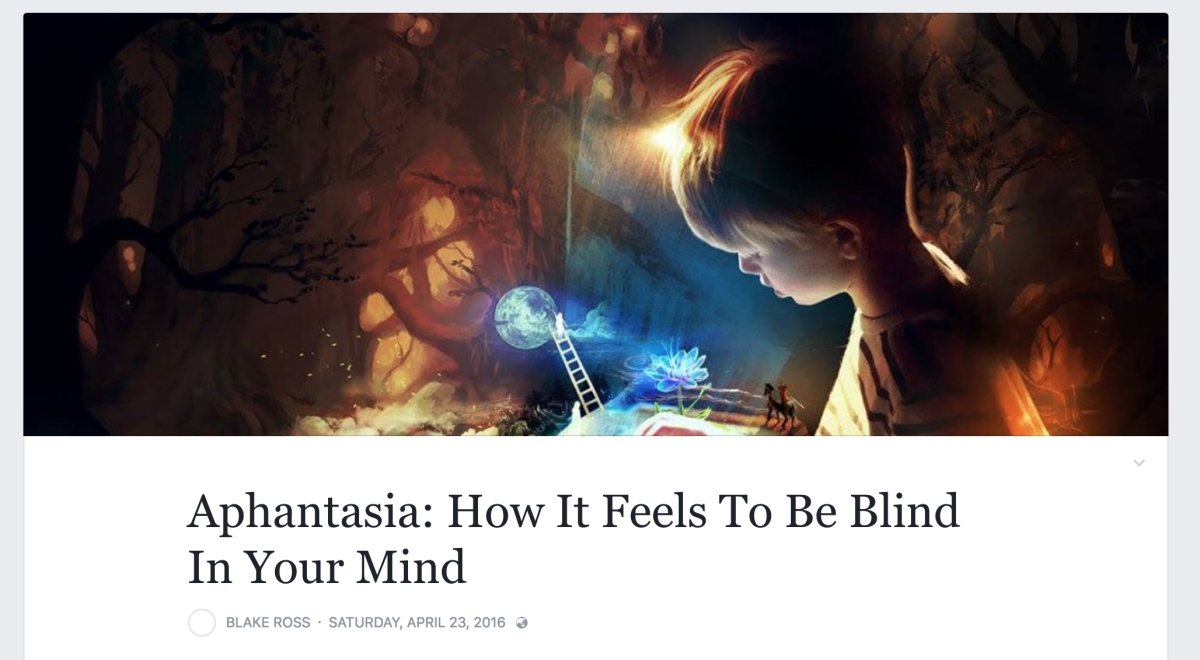Wed, 21 March 2018
Sounds like a magic word a magician would say before conjuring a rabbit from his hat, doesn’t it? But let me ask you this as you click play and listen to the audio version of this page: [smart_track_player url=”http://traffic.libsyn.com/magneticmemorymethod/Aphantasia__Develop_Your_Memory_Even_If_You_Cannot_See_Mental_Images.mp3″ title=”Aphantasia: Develop Your Memory Even If You Cannot See Mental Images” social_linkedin=”true” ] Can you visualize the magician pulling out the rabbit by his ears? For most of us, it will be easy to recall images inside our head, using our mind’s eye. However, if you could NOT see any image in your mind’s eye – no colors, no sounds, no smells, no textures, no flavors, nothing at all – you may have a condition called aphantasia or a blind mental eye. Don’t freak out, though. Many people have aphantasia, even magicians. Familiar with Penn Jillette (of Penn and Teller fame)?
He is a famous magician and entertainer, and he is an aphantasic(!). By his own admission, Penn says he cannot conjure a mental image of a person or a place to save his life.
What Exactly is Aphantasia? A Detailed DefinitionThe term ‘aphantasia’ comes from the Greek words a, meaning “without”, and phantasia, meaning “a capacity to form mental images”. The phenomenon was first described by the controversial psychologist Francis Galton – one of the pioneers of eugenics – in 1880.
The interest in the phenomenon was renewed after the publication of a study conducted by a team led by Dr. Adam Zeman, a professor of cognitive and behavioral neurology, at the University of Exeter.
Zeman’s team published a paper in 2015 on what they termed “congenital aphantasia”, now known simply as aphantasia. For Firefox co-creator Blake Ross it was a surprise revelation that other people could visualize things in the mind’s eye while he couldn’t. “I can’t ‘see’ my father’s face or a bouncing blue ball, my childhood bedroom or the run I went on ten minutes ago,” he wrote in a Facebook post.
According to Craig Venter, the biologist who created the first synthetic organism: “It’s like having a computer store the information, but you don’t have a screen attached to the computer.”
Is Aphantasia a Common Phenomena?
While research on the subject is still in its nascent stages, neurologists believe approximately one in 50 people or 2-5% of the population are non-visual-imagers. Sounds like a big number? Don’t be surprised. Being an aphantasic is nearly as common as having a food allergy. Neuroimaging has shown that mental imagery, although strongly associated with the left temporal lobe, requires the use of large networks of brain pathways. This means that aphantasia could potentially occur in different ways in different individuals.
The Two Likely Causes Of Aphantasia
However, the exact cause of aphantasia is still unknown. According to Dr. Zeman heredity and environment both are likely to be relevant causes. Interestingly, an aphantasic may have a visual memory which means they may be able to describe in detail about how things looked – the cat had blue eyes, the umbrella was pink and matched the skirt – even though they cannot see these very images in their mind’s eye. Moreover, many people who cannot visualize in mental images can think in sounds, while others can remember physical sensations. Penn says, when he dreams, he’s not sure if he sees images but has the sensation of knowing that “ideas wash over me”.
Want to Take The Aphantasia Test?
It is not possible to “see” what someone else is picturing inside their head unless they describe it to you. So how do we check what your mind’s eye is seeing? You can answer the Vividness of Visual Imagery Questionnaire, which is what psychologists use to rate different mental images of an individual, to test the strength of his mind’s eye. Although you don’t get any results, you’re helping a good cause by completing the survey and the questions themselves will tell you a lot about your imaginary visual style. [smart_podcast_player social_twitter=”true” social_facebook=”true” social_gplus=”true” social_linkedin=”true” social_email=”true” ]
How Aphantasia Affects Memory
Our brain stores information in two different ways – verbally and visually. Both these types of storage are independent of one another, and each can be used alone. Therefore, even people with aphantasia can complete the “tests of visual imagery” without too much difficulty. Here’s a quick test: Count the number of windows in your house. Quick #memory improvement exercise: Mentally count all the windows in your home.Click To TweetEven if you can’t see a “mental” image of your house and locate each window in that image, you would have an awareness of being there and recall from factual information the number of windows in your house. While aphantasics can remember things from their past, they experience these memories in a different way than someone with strong imagery. They often describe memories as a conceptual list of things that occurred rather than a video playing in their mind. As Ross says, he can ruminate on the “concept” of a beach, but cannot flash to beaches he has visited. “I know there’s sand. I know there’s water. I know there’s a sun, maybe a lifeguard. I know facts about beaches. I know a beach when I see it, and I can do verbal gymnastics with the word itself…But I have no visual, audio, emotional or otherwise sensory experience.” The brain has many unique ways of storing visual information than just as a picture.
Multiple Ways To Create Visual Imagery In Your Mind
Neuroscientists believe that the brain constructs visual imagery in more than one way. There are separate circuits for things like shape, size, color and spatial relationships, and when these are accessed together, we form an image of a memory. They think that aphantasics piggyback on neurons involved in controlling physical movements rather than using the visual brain circuitry to “visualize” or recall information. For instance, you can trace the letter B of the alphabet in your brain to know it has curves or you can use your mind’s eye to see its image.
Are There Any Aphantasia Benefits?
While the research is still out on this one, Penn says that because he thinks verbally and not visually, when he gets an idea, he can describe it instantly. While aphantasics’ use of spatial memory is stronger in the absence of visual memory. It gets better! People with aphantasia have been seen to perform on par with people who can visualize images in many tasks involving visual information. Moreover, a 2003 study stated the benefit of mental imagery is surprisingly small when it came to creative thinking. Does Aphantasia Hamper The Memory Techniques |
The Magnetic Memory Method Podcast

Categories
generalMemory Improvement Tools
Memory Method Tips
Brain Exercises for Memory Improvement
Memory Improvement Case Studies
Podcast
Guest Post
Memory Palace Tactics
Practical Memory Techniques
Uncategorized
Improve Memory Q&A
Archives
AprilMarch
February
January
December
November
October
September
August
July
June
May
April
March
February
January
December
November
October
September
August
July
June
May
April
March
February
January
December
November
October
September
August
July
June
May
April
March
February
January
December
November
October
September
August
July
June
May
April
March
February
January
December
November
October
September
August
June
May
April
March
February
January
December
November
October
September
August
July
June
May
April
March
February
January
December
November
October
September
August
July
June
May
April
March
February
January
December
November
October
September
August
July
June
May
April
March
February
January
December
November
October
September
August
July
June
May
April
March
February
January
December
November
October
September
August
July
June
May
April
March
February
January
December
November
September
| S | M | T | W | T | F | S |
|---|---|---|---|---|---|---|
| 1 | 2 | 3 | 4 | 5 | 6 | |
| 7 | 8 | 9 | 10 | 11 | 12 | 13 |
| 14 | 15 | 16 | 17 | 18 | 19 | 20 |
| 21 | 22 | 23 | 24 | 25 | 26 | 27 |
| 28 | 29 | 30 | ||||
Syndication

 Aphantasia.
Aphantasia.





